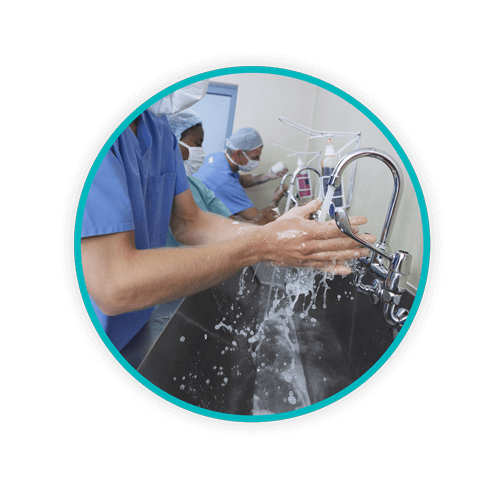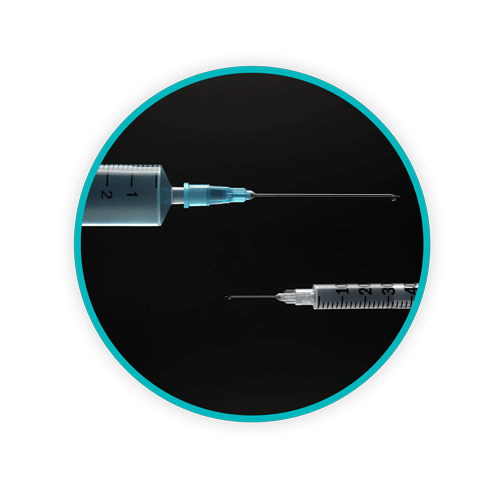How Infection Preventionists Help Create Safe Healthcare Environments

We are all generally familiar with what physicians and nurses do in healthcare; however, when it comes to specialization there are more gray areas about what healthcare professionals do every day. One example I am intimately familiar with is the day-to-day of infection prevention.
An infection preventionist (IP) is a specialty career in healthcare, and most people do not know what they do. In a nutshell, IPs are professionals who ensure healthcare workers and patients are doing everything they should to prevent infections. One crucial way that IPs perform their work is by making rounds throughout the healthcare facility. What does that look like?
TOPICS WE WILL COVER:
1 / What Are Infection Prevention and Control Rounds?
2 / What goes into an IPC report?
3 / How Infection Preventionists Address Potential Safety Concerns
4 / The Benefits of Assessing the Healthcare Environment with an IP
What Are Infection Prevention and Control Rounds?
Infection prevention and control (IPC) rounds are a big part of an IP’s job. IPC walking rounds involve assessing areas, processes, policies, worker culture, and other considerations. The IP can observe work practices and the environment in real-time. This allows the identification of IPC gaps and opportunities for improvement. Most IPs will perform the IPC rounds using a checklist specific to the area or process being monitored.
A few examples of processes to observe include:
- Hand hygiene compliance

- Sharps management
- Infectious waste management
- Personal Protective Equipment (PPE) compliance
- Cleaning and sterilization of instruments, equipment, and environment
IPs perform rounds across all areas of healthcare facilities, including:
- Sterile processing
- Dirty utility rooms
- Supply storage areas
- Operating rooms
- Dental treatment areas
- Procedure rooms
What goes into an IPC report?
The IP organizes the rounding data into a report to send to the area’s leadership. The report can include a description of the findings, pictures, recommendations for improvement, and even kudos for a job well done.
It is common for an area’s leadership to be surprised by any IPC breaches in the report. The area’s leadership sees their unit with a wide lens, while the IP views it with a well-trained IPC eye. Working collaboratively with other disciplines will assist with implementing interventions to address any IPC breaches.
How Infection Preventionists Address Potential Safety Concerns
There are occasions when IPC rounding identifies safety concerns. If patient and staff safety is at risk, those items should be addressed immediately, without waiting for a written report.
A few examples of safety issues to address directly could include:
- Improper handling of sharps
- Standard precaution breaches
- Unclean medical instrumentation
- Unsafe medication administration
These safety concerns could lead to an infection. If any of these issues are discoved, the IP will stop rounds and address IPC safety breaches with staff and leadership. This may lead to action planning and monitoring to measure progress.
While performing IPC rounds, talking with staff about their job and their impacts on IPC is also a bonus. During IPC rounds, the IP will communicate with staff at all levels. IPs will go from talking to a housekeeper cleaning a patient’s room to a surgeon outside the operating room. IPs work in collaboration with all staff to deliver safe patient care.
Just-in-time training will often occur due to an IPC finding. This helps establish a relationship between staff and the IPC department. The engagement from staff will help determine the IPC culture of the area. IPC is everyone’s responsibility, and the IP will express that while performing rounds and communicating with staff.
The Benefits of Assessing the Healthcare Environment with an IP
IPs are knowledgeable on how pathogens spread from one source to the next, and identification of a pathogen will assist in identifying how to stop the spread. The environment can play a role in pathogen transmission. When the IP is performing IPC rounds, the healthcare environment is assessed. The IP does not only look at the cleanliness of areas, they also look at how equipment is handled, space for proper storage, air handling compliance, used products, and workflow. Pathogens can travel via host, contact surfaces, and even air. The IP will investigate all the reservoirs for pathogen transmission and possible infection to individuals.
IPs assist healthcare facilities with safe patient care. The recent COVID-19 pandemic helped put the profession of IPC on a pedestal. The profession should consistently be elevated because prevention is the key to lessening infections. IPC rounding in healthcare is a systematic way to evaluate the culture of IPC. Leadership support is imperative to a successful IPC program, and ultimately IPC rounding reports should be transparent to all staff to create buy-in for the staff’s role in preventing infections.
References:
- APIC. Who are infection preventionists? Who are infection preventionists? – APIC
- CDC. Infection control. 2020. Guidelines Library | Infection Control | CDC
- van Seventer, J. M., & Hochberg, N. S. (2017). Principles of Infectious Diseases: Transmission, Diagnosis, Prevention, and Control. International Encyclopedia of Public Health, 22–39. https://doi.org/10.1016/B978-0-12-803678-5.00516-6
Let's Talk!
Your time is valuable, and we don’t want to play hard to get. You can either phone us directly on the details listed on our contact page, or feel free to fill out this short form and one of our team members will get back to you as quickly as possible.
